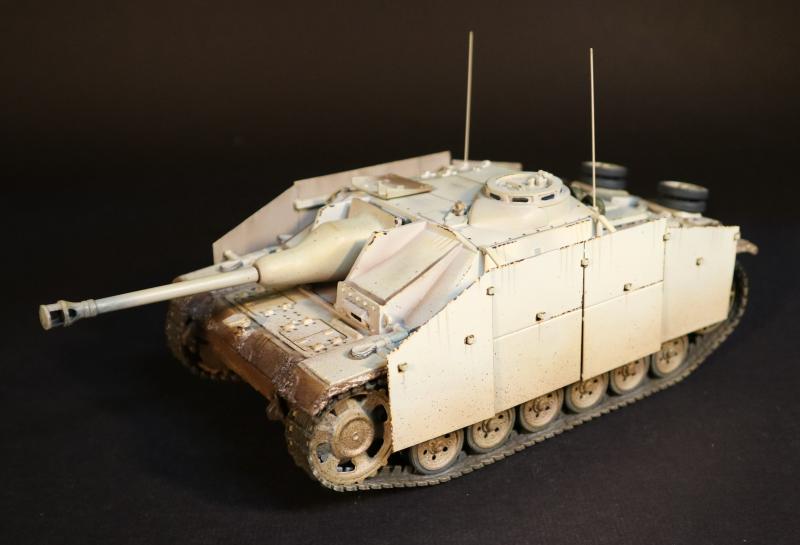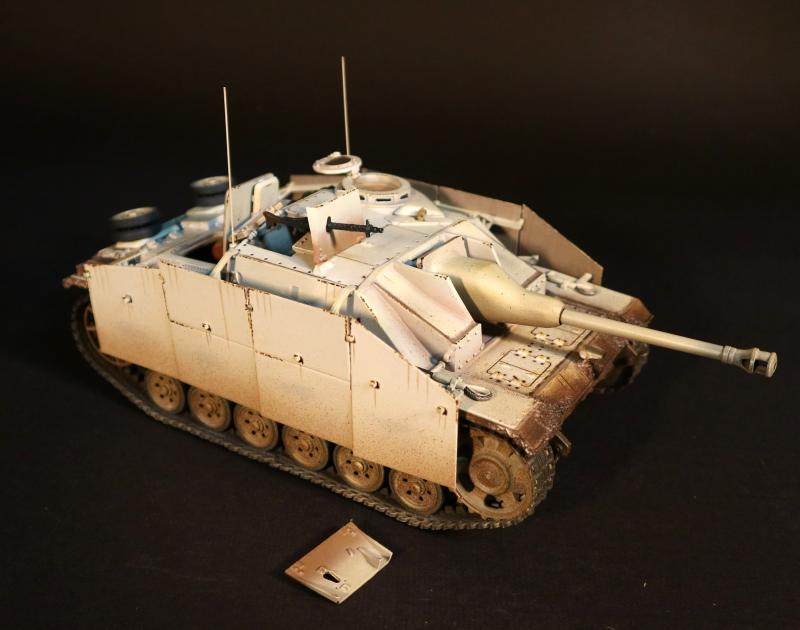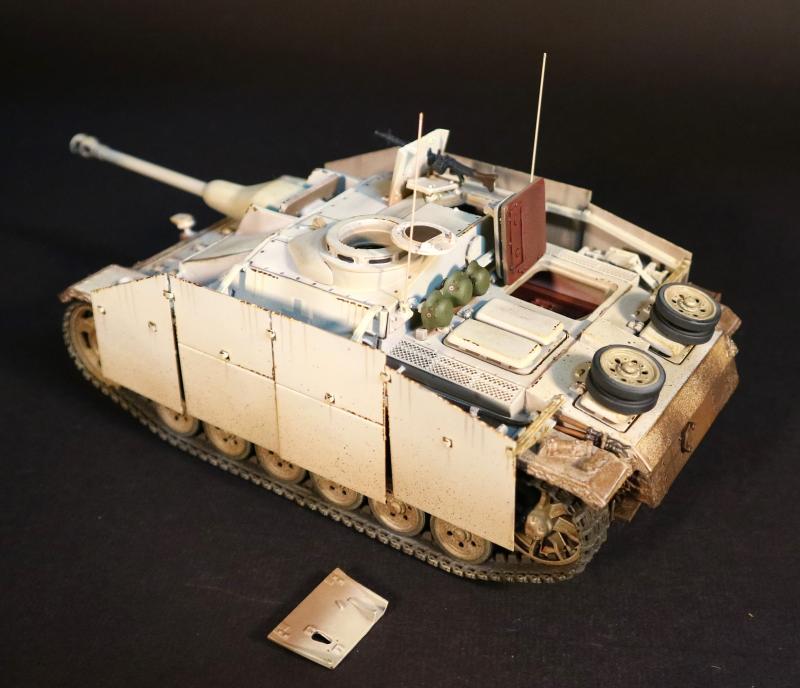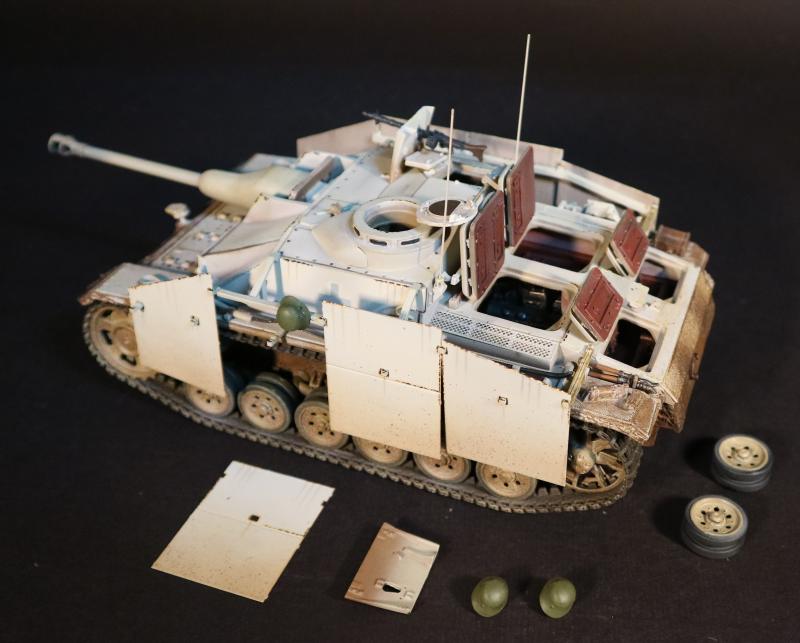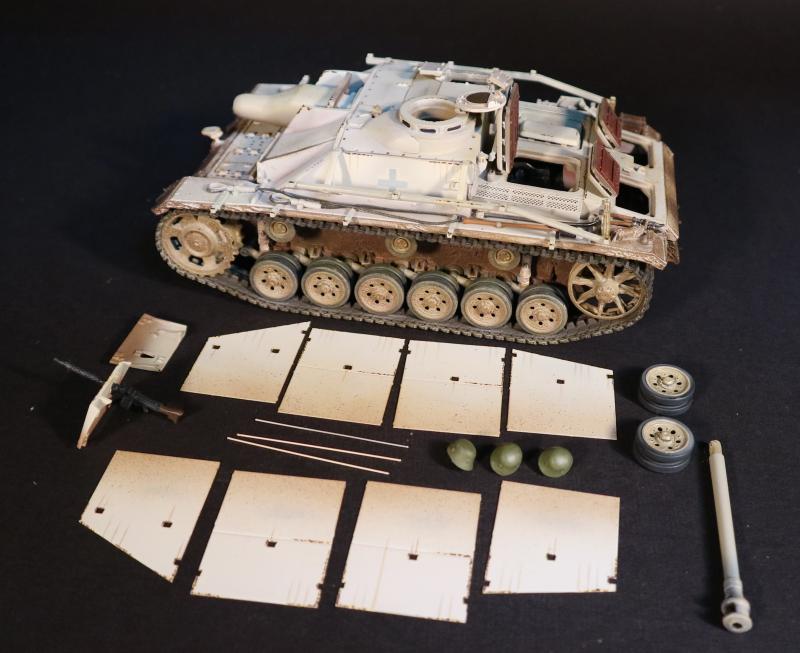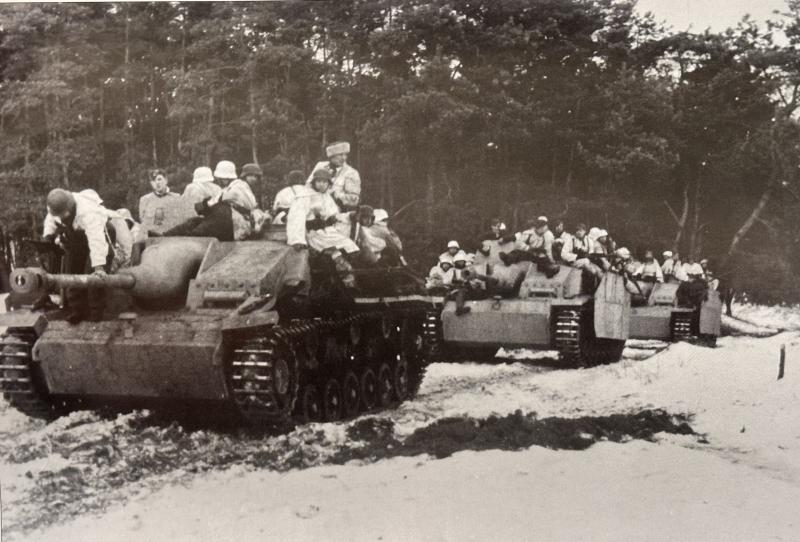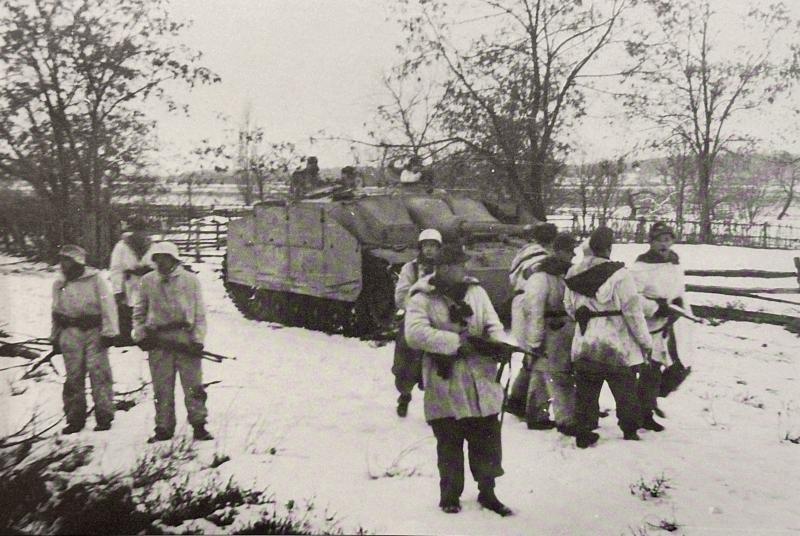German Sturmgeschütz III Ausf. G (Sd.Kfz. 142/1), StuG III G, Commanded by Knight’s Cross Winner SS-Obersturmfuhrer Willy Hein, 5.SS-Panzer Division “Wiking”, Battle of the Cherkassy Pocket, February 1944., German Armour, WWII
$329.00
Item Number: GA-23
German Sturmgeschütz III Ausf. G (Sd.Kfz. 142/1), StuG III G, Commanded by Knight’s Cross Winner SS-Obersturmfuhrer Willy Hein, 5.SS-Panzer Division “Wiking”, Battle of the Cherkassy Pocket, February 1944., German Armour, WWII
THE BATTLE OF THE CHERKASSY POCKET
The Battle of the Cherkassy Pocket, while one of the lesser known actions of World War ii, was perhaps one of the most brutal, physically demanding, and morally difficult battles fought by the Germans against the Russians. In January 1944, to the west of the towns of Cherkassy and Korsun in the Ukraine, 60,000 German soldiers of Gruppe Stemmerman were encircled by Russian forces attempting to create a “second Stalingrad.” For weeks, the encircled Germans fought against overwhelming odds in brutal wintry conditions alternating between freezing snow and wet, muddy grime in the grim hope of survival.
Critical to the Germans ability to continue fighting inside the pocket was the 5. SS-Panzer Division “Wiking”….the only unit inside the pocket with armor forces. The few panzers and assault guns of the 5. SS-Wiking served as the pocket’s fire brigade, continuously moving from one crisis point to another with the fate of the entire pocket hanging in the balance. One of these extraordinary engagements occurred on 28 January 1944, as the Russians attacked the town of Olshana, a key road junction devoid of combat forces and garrisoned by supply troops of the 5. SS-Wiking. If Olshana was captured by the Russians, the 5. SS-Wiking would collapse, the Russians would be able to splinter the pocket, and destroy the Germans with ease.
With few troops to spare, the Wiking’s headquarters ordered SS-Obersturmführer Willy Hein, a company commander in the Wiking’s Panzer battalion, to defend Olshana at all costs and hold out until further reinforcements could be sent. To accomplish this task, Hein was given four Stug III G’s that were without radios and under repair by the Wiking’s maintenance battalion. Crewed by men from his panzer company, Hein set out for Olshana with his ramshackle force of four whitewashed Stug III assault guns that were devoid of unit markings. Arriving at Olshana at 1800 hours, Hein discovered the Wiking supply troops threatened on all sides by Russian infantry. After quickly assessing the situation, Hein decided to boldly attack the entrenched Russian infantry head on. Using high explosive shells, Hein’s assault guns shattered the Russian troops, giving the beleaguered Germans a few precious hours of breathing space. Hein's force lost one Stug III and destroyed five Russian assault guns during the day's action.
The Russians renewed their attack early the next morning of January 29 January. This time , the Russians attacked in greater force with an entire infantry regiment from the 136th Rifle Division and strong infantry and tank forces from the 63rd Cavalry Division. Over the next several hours, Hein and his three remaining Stugs bloodied this far superior Russian force before pulling back into the town of Olshana. During the morning's fighting, Hein lost another Stug due to mechanical failure of the steering mechanism. Down to only two remaining Stugs, the situation looked desperate for the Germans. Luckily, at 1300 hrs, a company of infantry from Wiking’s Narwa battalion arrived, and informed Hein the rest of their battalion was on its way.
Noticing the Russians preparing for another assault, Hein decided to attack first. Mounting the newly arrived infantry on his two Stugs, Hein set out for the assault. Unfortunately, just as the attack began, the main cannon of the second Stug was disabled, leaving only Willy Hein’s Stug operational. Throwing caution to the wind, Hein continued the assault. With only his single Stug III, Hein deftly used terrain to maneuver around the Russian forces and launch a surprise attack in their flank. As his gunner used the Stug’s 7.5cm cannon to fire on six Russian anti-tank guns and their crews, Hein was a whirlwind of action…throwing grenades, using the loader’s position MG-42 machine gun, and firing his MP-40 machine pistol from his commander’s cupola to disperse the surprised Russian infantry. Hein then directed his Stug to roll over a row of halftracks, trucks, and horse teams that the Russians used to transport the six anti-tank guns. Hein’s Stug then knocked out two Russian T-34s. Witnessing this destruction, the Russians fled. During this action, Hein’s force captured 150 Soviet infantry (including a Regimental commander) and killed scores more. Further, the ferocity of Hein’s assault so jarred the Russians that they called off all further action...despite the fact that they were preparing to attack Olshana with two fresh divisions. For his gallantry and courage that saved the pocket from collapse, SS-Obersturmführer Willy Hein was awarded the Ritterkreuz (the Knight’s Cross).
This action, and many others like it, let the German forces of the Cherkassy Pocket survive weeks of encirclement. Finally, Generalfeldmarschall Erich von Manstein was able to gather the troops necessary to launch a desperate relief attempt. Manstein's forces were composed of two infantry corps and 10 panzer divisions…the Germans last effective offensive force on the Eastern Front. After days of fighting in horrible weather conditions, it appeared this relief force would not be able to punch through the Russian lines and relieve the trapped Germans. Disaster loomed. When briefed on the desperate situation, Hitler would not authorize a breakout attempt and ordered the trapped Germans to stand fast. Realizing this meant certain doom for the Germans in the pocket, Field Marshal von Manstein disobeyed Hitler. On his own authority, von Manstein launched one final attack and ordered the encircled Germans to break out and link up with the relief force. By the slimmest of margins, the Germans were able to open a tiny corridor…only a few hundred yards in places… through the Russian lines. Abandoning all their heavy weapons and vehicles, the trapped Germans marched through blinding snow to confront their final obstacle to salvation: the Gniloy Tikich…a stream swollen by an early thaw to over 20 yards wide, over 6 feet deep, with a raging current and steep banks. Every German soldier trying to escape had to swim across it. Many would drown. None would ever forget the horror of the Gniloy Tikich.
Ultimately, the Germans narrowly avoided disaster and 40,000 Germans escaped the Cherkassy pocket. But it was a Pyrrhic victory. The 10 panzer divisions and two infantry corps of the German relief force were bled white, and they would never regain their strength. The Germans never again possessed such a potent offensive force on the Eastern Front. This reduction in strength allowed for the sweeping Russian successes that pushed the Germans out of the Ukraine in the next few months and set the stage for Operation Bagration the following summer...the operation that culminated in the fall of Hitler's Third Reich.
Box size: 10 ½” x 7” x 4 ¾”
Weight: 820g
Due to be released in JUNE 2025.
